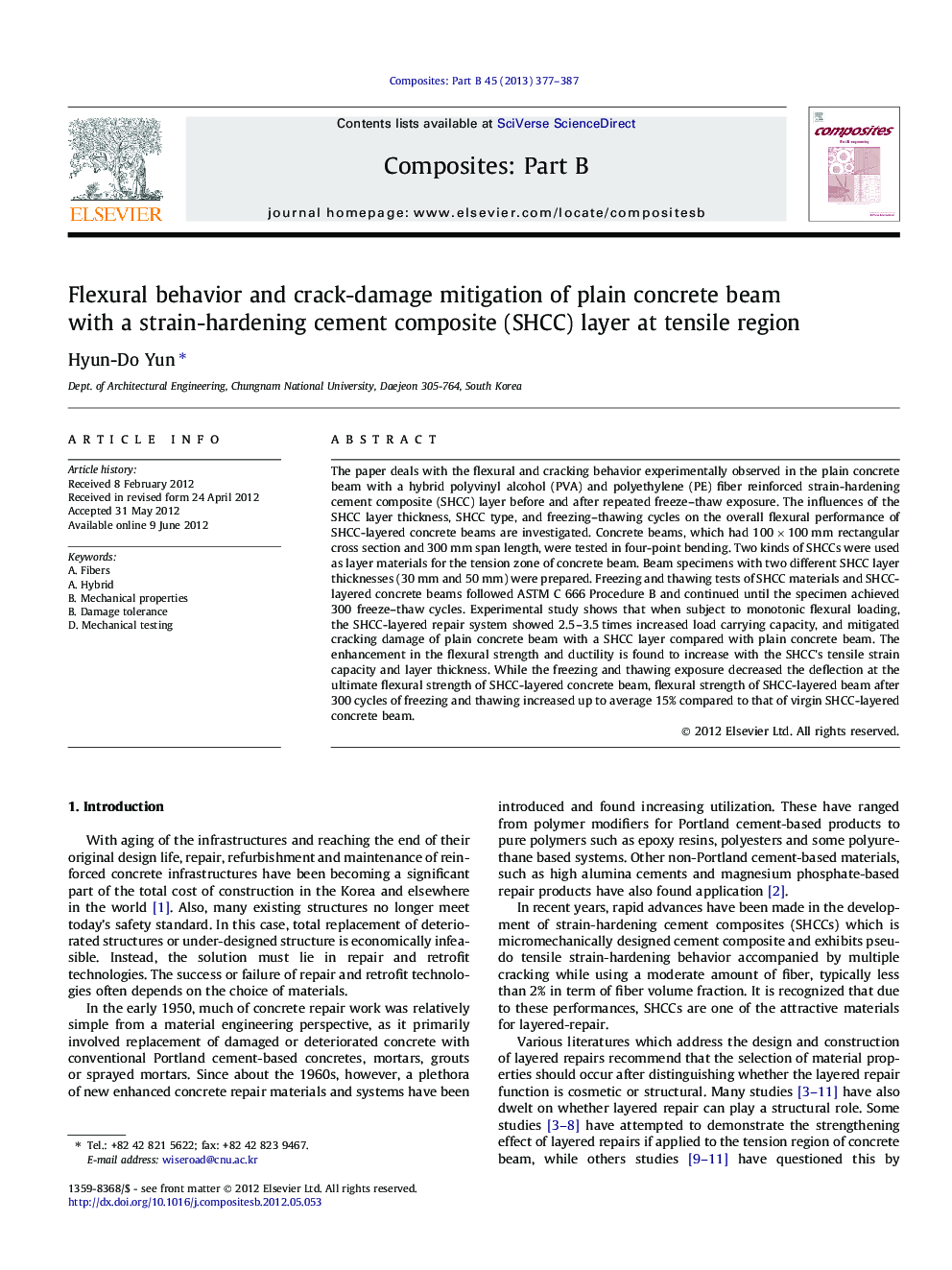| Article ID | Journal | Published Year | Pages | File Type |
|---|---|---|---|---|
| 818903 | Composites Part B: Engineering | 2013 | 11 Pages |
The paper deals with the flexural and cracking behavior experimentally observed in the plain concrete beam with a hybrid polyvinyl alcohol (PVA) and polyethylene (PE) fiber reinforced strain-hardening cement composite (SHCC) layer before and after repeated freeze–thaw exposure. The influences of the SHCC layer thickness, SHCC type, and freezing–thawing cycles on the overall flexural performance of SHCC-layered concrete beams are investigated. Concrete beams, which had 100 × 100 mm rectangular cross section and 300 mm span length, were tested in four-point bending. Two kinds of SHCCs were used as layer materials for the tension zone of concrete beam. Beam specimens with two different SHCC layer thicknesses (30 mm and 50 mm) were prepared. Freezing and thawing tests of SHCC materials and SHCC-layered concrete beams followed ASTM C 666 Procedure B and continued until the specimen achieved 300 freeze–thaw cycles. Experimental study shows that when subject to monotonic flexural loading, the SHCC-layered repair system showed 2.5–3.5 times increased load carrying capacity, and mitigated cracking damage of plain concrete beam with a SHCC layer compared with plain concrete beam. The enhancement in the flexural strength and ductility is found to increase with the SHCC’s tensile strain capacity and layer thickness. While the freezing and thawing exposure decreased the deflection at the ultimate flexural strength of SHCC-layered concrete beam, flexural strength of SHCC-layered beam after 300 cycles of freezing and thawing increased up to average 15% compared to that of virgin SHCC-layered concrete beam.
